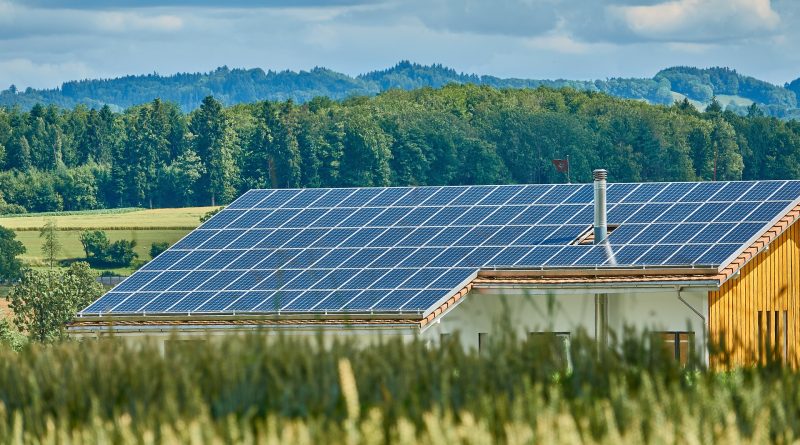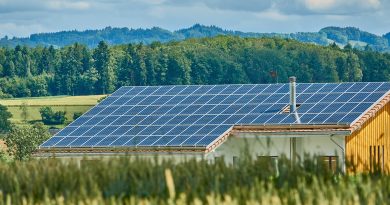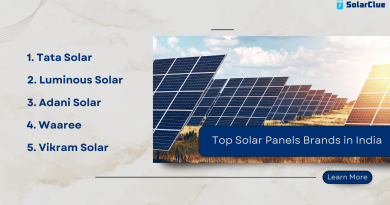Solar On-Grid Systems: Installation Guide & Benefits
Solar energy has emerged as a viable renewable energy source that has gained significant popularity in recent years. Solar on-grid systems, also known as grid-tied systems, allow consumers to generate electricity from the sun and feed it directly into the grid. This article aims to provide a comprehensive guide on what solar on-grid systems are and how to install them. By the end of this blog, you will have a clear understanding of the benefits of on-grid systems and the necessary steps to get one up and running.
Table of Contents
Understanding Solar On-Grid Systems
Solar on-grid systems are photovoltaic (PV) systems that are connected to the utility grid. When sunlight strikes solar panels, the photovoltaic cells convert the energy into electricity. This electricity can either be used immediately by the consumer or fed back into the grid.
The primary components of a solar on-grid system include solar panels, an inverter, a bi-directional utility meter, and the grid itself. Solar panels capture sunlight and convert it into direct current (DC) electricity, while the inverter converts the DC electricity into alternating current (AC) electricity, which is the form of electricity used in homes and businesses. The bi-directional utility meter measures the amount of electricity flowing in and out of the system, allowing consumers to receive credits for surplus electricity generated.
Benefits of Solar On-Grid Systems
There are several advantages to installing a solar on-grid system:
1. Cost Savings: A solar on-grid system enables consumers to reduce their electricity bills significantly. By generating their own electricity, consumers can consume less energy from the grid, resulting in lower monthly utility bills.
2. Income Generation: If your solar on-grid system produces more electricity than your consumption, it can be fed back into the grid. Many utility companies offer net-metering programs that provide homeowners with financial credits for the excess electricity they produce. These credits can offset future consumption or be converted into cash payments.
3. Environmental Benefits: Solar energy is a clean and renewable source of electricity that produces no greenhouse gas emissions. By installing a solar on-grid system, you are reducing your carbon footprint and contributing to a more sustainable future.
4. Grid Security: In the event of a grid outage, solar on-grid systems are designed to shut down automatically for safety reasons. This protects electrical workers from being injured by electricity flowing back into the grid when power is being restored.
Installing a Solar On-Grid System
While the installation of a solar on-grid system generally requires professional expertise, understanding the process can help consumers make informed decisions and communicate effectively with installers. The following steps outline the installation process:
1. Site Assessment: Before installing a solar on-grid system, a professional installer will evaluate your property to determine its solar potential. Factors such as roof orientation, shading, and available space will be assessed to ensure optimal performance.
2. System Design: Based on the site assessment, the installer will design a solar on-grid system that meets your energy needs. This involves determining the number of solar panels required, the tilt and orientation of the panels, and the location of the inverter.
3. Obtaining Permits: Before installation can begin, it may be necessary to obtain permits or approvals from local authorities or utility companies. This ensures compliance with regulations and safety standards.
4. Installation: The installation process typically involves mounting the solar panels on the roof or ground, connecting the panels to the inverter, and wiring the inverter to the bi-directional utility meter and the grid. It is crucial to hire a professional installer to ensure the system is installed correctly and safely.
5. Testing and Commissioning: Once the installation is complete, the system will undergo testing and commissioning to verify its performance and compliance with safety regulations. A final inspection may be required before the system can be connected to the grid.
Conclusion
Embrace the power of the sun with SolarClue®’s on-grid systems – a practical and sustainable solution to reduce dependence on traditional electricity sources. By generating your own electricity and feeding excess power back into the grid, you not only save money but also earn credits and contribute to a cleaner environment. Installing a solar on-grid system requires careful planning, professional expertise, and compliance with local regulations. With the right information and guidance, SolarClue® ensures you enjoy the benefits of solar energy while making a positive impact on the planet. Connect with us today to illuminate your path to a greener future.
Frequently Asked Questions
Install solar panels on rooftops or open spaces, connect them to an inverter, and link the inverter to the main electrical panel and the grid through a licensed electrician.
No, on-grid systems typically do not need batteries. Excess energy is fed back to the grid, acting as a virtual storage system.
An inverter converts DC electricity from solar panels into AC electricity, making it compatible with the grid and usable in homes or businesses.
Yes, additional solar panels and inverters can be added for increased capacity, offering scalability.
Excess energy is sent back to the grid, and users may receive credits for this surplus electricity through net metering.
Regular inspections and cleaning of solar panels are essential. Inverters and other components may require occasional checks.
On-grid systems provide reduced electricity bills, potential income from selling excess power, and environmental benefits by utilizing clean energy.
No, on-grid systems are designed to shut down during outages to ensure the safety of utility workers. Users draw power from the grid in such situations.
On-grid systems reduce reliance on traditional energy sources, lowering greenhouse gas emissions and promoting a greener energy mix.
Yes, many regions offer incentives like tax credits, rebates, and net metering programs, making on-grid systems financially attractive for users.



